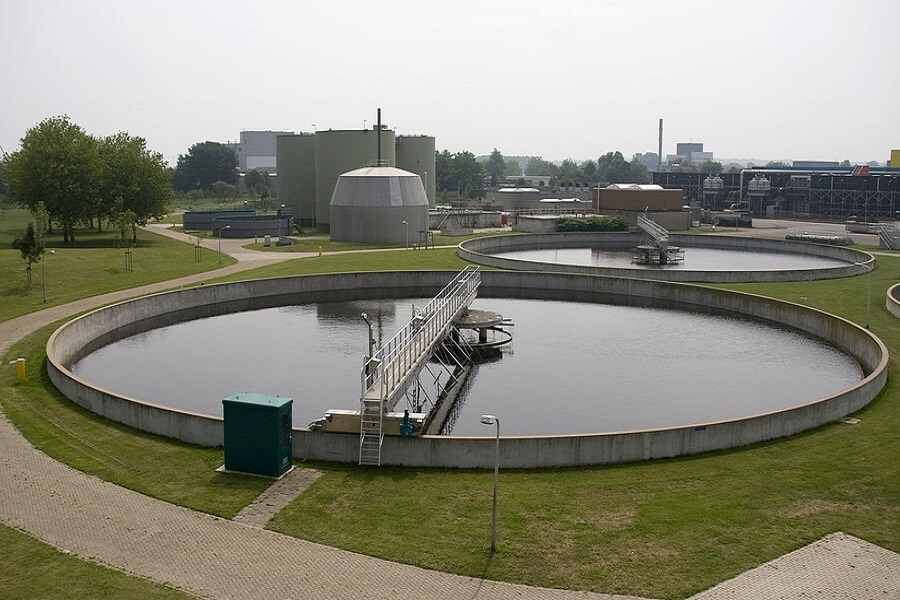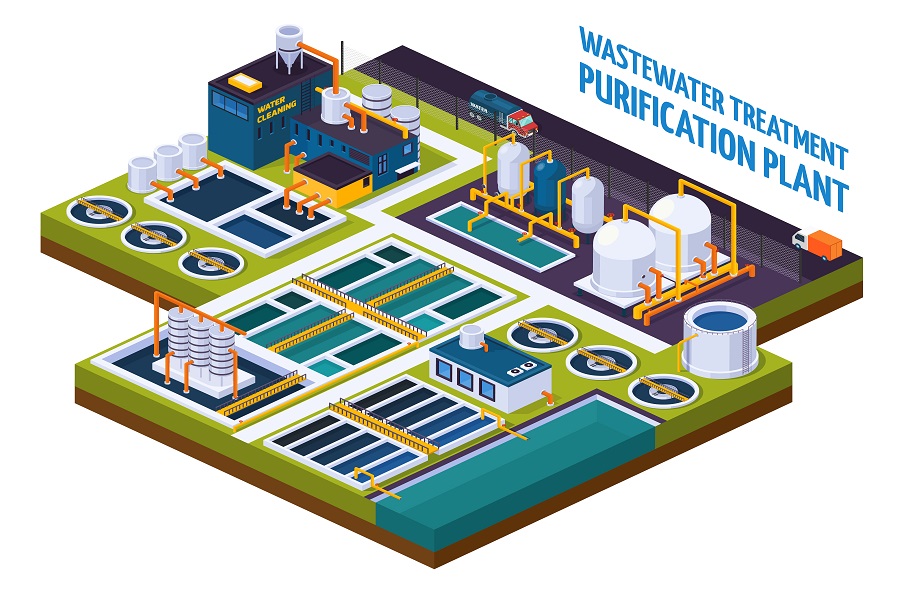Digital technologies have made us enter a parallel universe. A world where everything can be created, recreated, experimented with, and experienced with just the touch of a button. From virtual walkthroughs to immersive cloud-based experiences, Industry 4.0 has transformed the way we approach our production, design and construction processes.
In fact, it is revolutionizing every industry that it is touching. And water treatment industry is no different. By integrating Building Information Modeling with real-time data from IoT (Internet of Things) devices, digital technologies are increasingly transforming the water treatment industry for good. From conceptualizing the design to creating workflows and identifying potential risks, material options, and cost variations, the BIM-IoT integration is helping the water treatment industry solve some critical problems, well within the stringent timelines.
The Problems that the Water Treatment Industry is Facing
The water industry today is facing many new and odd challenges. From growing urban population to changing climatic conditions, aging infrastructure, and altering regulatory norms, there’s a lot that the water industry has to comply with. To top it off are the requirements to control the ever-increasing energy costs and ensure safety and sustainability at all levels.
However, most water companies are struggling to efficiently manage their facilities, especially amidst increasing operating costs and maintenance.
To solve these critical pieces of puzzle, water treatment plants must leverage the power of BIM. By collaborating teams, data, and workflows at every stage of the project, BIM and IoT integration provides facility managers a realistic visual representation of their entire process and helps them streamline their workflows – right from pre-conceptualization to construction and maintenance.
How BIM-IoT Integration Can Solve the Key Challenges of Water Treatment Plants
Here’s how BIM & IoT are helping the water treatment industry overcome its critical challenges.
Challenge #1: The Need for Superior Designs and Construction
The increase in population is putting extensive pressure on water/wastewater treatment plants. To meet the growing water demands, water companies need more capable and sustainable facilities that can competently fulfill the needs of both the existing and future generations. While doing so, they also need to adhere to high environmental standards and global regulations – something that requires extensive cross-discipline collaboration across all levels. Building such models using 2D CAD drawings is impossible.
Water companies need 3D BIM modeling techniques like BIM 360 to accurately visualize their designs and connect workflows, teams and data on the cloud. By providing them with valuable data and design insights, BIM can help project managers save hundreds of hours of design work as well as identify and remediate potential design problems right at the conceptual stage.
With complete information at hand, project teams have the freedom to explore alternative concepts, perform value engineering, improve and optimize designs, and make all the necessary corrections to prevent clashes during the construction cycle.
BIM also promotes superior collaboration, integration, and coordination between multiple engineering systems. This, in turn, leads to better construction, operation, and maintenance of water treatment plants.
Challenge #2: Aging Infrastructural Facilities & Systems
All infrastructures age with time and water treatment plants are no exception. From obsoleting utilities to degrading equipment and software systems, there’s a lot in WTPs that require regular maintenance and/or replacement. Any delay in these tasks only leads to wastage of valuable resources and unplanned downtimes.
Through real-time data capture and analysis, Industry 4.0 technologies can not only improve operations, but they also make way for preventative maintenance. Through advanced automated processes and sensors based data, IOT helps in the capture of historic data for the development of a predictive model that detects, analyzes and highlights all the upcoming repair and maintenance requirements.
For example, IoT-BIM integration can help in quick identification and prioritization of the repair of pipes that need the most maintenance, thus taking the guesswork out of the game. It not only reduces the cost, time, and pressure associated with reactive maintenance but also ensures faster response and minimized downtime.
Challenge #3: Meeting the Increasing Water Demands
The urban locales in the US are witnessing a quick rise in population. This has led to an increase in the demand for quality water. But due to limited resources and increasing costs, it has become imperative for the industry to do more with less.
IoT-BIM integration offers the easiest way out. By integrating site and asset data, it helps in evaluating the current supplies, forecasting the futuristic demands of the residents, and building solutions for consistent availability of clean and hygienic water. By capturing and integrating data from other IoT devices, like drones, BIM makes monitoring of remote and unmonitored sites easy and helps in mitigating water wastage due to seeps, spills, leakages, overflows, and more.
Challenge #4: Maintaining Costs of Operation
Water treatment is a resource-hungry, energy-intensive process that’s continuously feeling the pressure of energy price volatility. Water companies are in quick need of solutions that can help them manage and reduce their costs of operations.
Through real time monitoring, IoT helps companies gain an in-depth understanding of their plant’s energy utilization as well as identify processes that are more energy demanding than others. It also helps them evaluate and utilize various renewable energy sources to reduce their demand on the grid. By automatic load shifting on the basis of weather, Industry 4.0 technologies help in managing the energy utilizations of high-demanding sites. In turn, this helps in keeping the consumer’s sewage and water charges as low and stable as possible.
Challenge #5: Supporting Environment and Sustainability
Global environment regulations have made it mandatory for water companies to build water-resilience management techniques and meet the strict environment safety norms. From flood modeling to clean water distribution to suitable drainage design and resource-friendly operations, the needs are many and inevitable.
IoT ensures improve resource utilization. It helps water companies in monitoring unmonitored sites in real time and helps prevent leaks and spillage. By utilizing weather data, IoT also helps in designing preventive solutions to avoid flooding or overflowing of water during heavy rainfall.
The Bottom Line
Today, Industry 4.0 and BIM offer water treatment plants the easiest way to increase plant’s resilience. It not only gives better access and control over real-time data, but also helps in mitigating risks during changing conditions. By seamlessly creating a digital twin and highlighting the whole model in 3D, BIM optimizes the plant’s operations, strengthens process maintenance, and improves the safety of the plant and workforce during construction, operations, and beyond
Need Help?
Connect with us to leverage the power of Building Information Modeling to streamline and strengthen your water treatment infrastructure. We offer reliable, efficient, and accurate BIM services at cost-effective prices. Our certified and experienced experts use industry-leading BIM software and technologies like BIM 360, Revit, AutoCAD, Navisworks, ArchiCAD, MicroStation, STAAD, and more to improve the architectural, structural and various other aspects of your plant. Talk with our experts to know how we can maximize your plant’s service capabilities.






